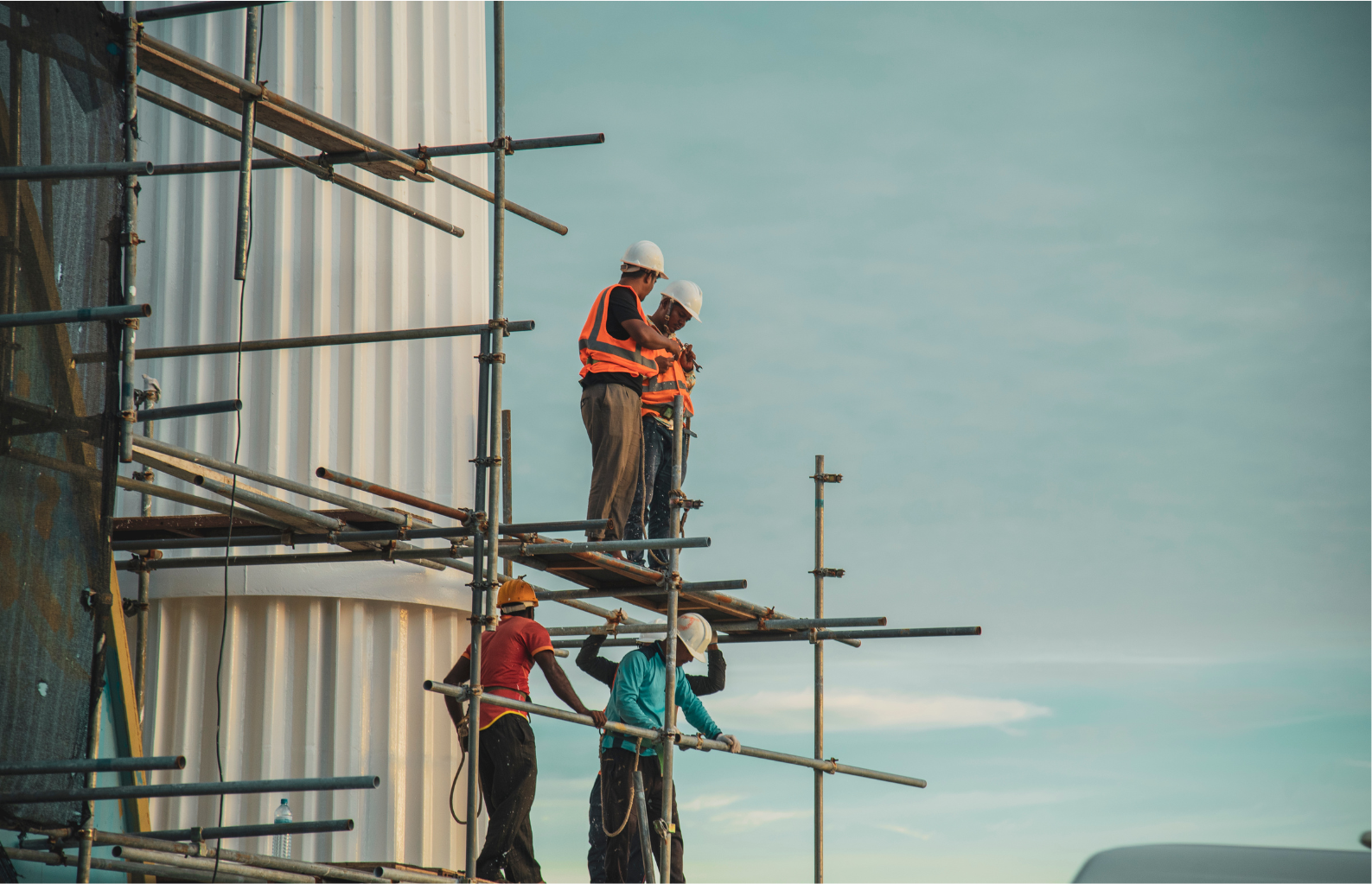Get Inspired
The construction sector in Cornwall plays a vital role in the region's economic landscape, contributing nearly 29% of the county's value. As one of Cornwall's fastest-growing enterprise clusters, the sector is central to addressing key regional challenges such as housing, infrastructure, and sustainable development.
People who work in construction take an active role in helping to shape the world around them. This is the industry that dreams up, designs and builds schools, hospitals, and homes. Construction creates the infrastructure that supports our villages, towns, and cities. With a strong emphasis on innovation and community impact, construction in Cornwall offers a wealth of opportunities for skilled professionals, tradespeople, and new entrants alike—by working in construction, you become a part of this hugely important work that helps to drive the economy forward. Construction is also a sector which suits people from a multiple of backgrounds boasting a wide range of different skills.
Explore by Job Title
- Town planning officers
- Quantity surveyors
- Chartered surveyors
- Civil engineers
- Sheet metal workers
- Metal plate workers, and riveters
- Painters and decorators
- Scaffolders, stagers and riggers
- Road construction operatives
- Construction operatives n.e.c.
- Mechanical engineers
- Construction and building trades supervisors
- Welding trades
- Steel erectors
- Bricklayers and masons
- Roofers, roof tilers and slaters
- Plumbers and heating and ventilating engineers
- Elementary construction occupations
- Production managers and directors in construction
- Architects
- Construction project managers and related professionals
- Skilled metal, electrical and electronic trades supervisors
- Electricians and electrical fitters
- Carpenters and joiners
- Glaziers, window fabricators and fitters
- Construction and building trades n.e.c.
- Plasterers
- Floorers and wall tilers
- Architectural and town planning technicians
- Moulders, core makers and die casters
- Pipe fitters
- Air-conditioning and refrigeration engineers
- Electrical engineers
- Design and development engineers
- Building and civil engineering technicians
How a Building Comes to Life: The RIBA Stages Explained
Ever wondered how a building actually gets built - from the first idea to opening the doors? Architects and construction teams use a step-by-step plan called the "RIBA Plan of Work", which breaks down everything in clear stages. Every stage involves different jobs - from architects and engineers, to surveyors, trades, and planners. Understanding the RIBA stages helps you see how all the career paths in construction fit together to bring a project to life.
Here's a simple guide to what happens at each stage:
-
What do we need to build?
This is where it all starts. The client (person or company who wants the building) figures out what they need - like a school, housing development, or office space - and why they need it.
-
Let's plan the vision
The architect works with the client to understand their goals, budget, and what the building should include. They write a 'brief' - a clear plan of what the project should achieve.
-
Bringing ideas to life
The architect starts sketching ideas and exploring different ways the building could look and work. It's all about creativity and exploring options at this stage.
-
Getting into the detail
Design ideas are developed into real plans that show the size, layout, and technical features of the building. Other specialists like engineers start to get involved too.
-
Ready to build
Everything is drawing up in detail, including technical drawings, materials, and specifications. The construction team gets all the info they need to build exactly what was planned.
-
Let's build it!
Construction begins! Builders, tradespeople, and engineers, bring the design to life on site, following the plans and working as a team to keep the project on track.
-
Time to move in
Once the building is finished and everything is tested, it's handed over to the client. Any small fixes or checks are completed so the space is ready to use.
-
Keeping it running
Even after it's built, the building needs looking after. This stage is about maintenance, monitoring how the building is used, and learning lessons for future projects.




